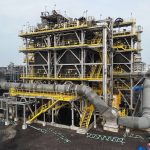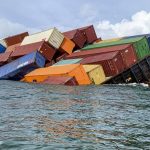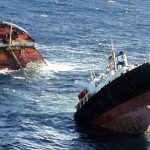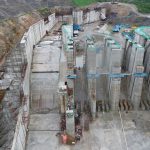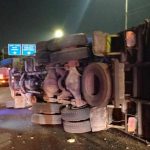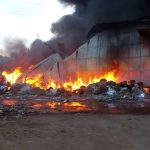Liga Asuransi – Dear readers, how are you? After we discuss various aspects of risk management of construction projects, now it’s time to continue with the discussion of the contents of the policy of the project insurance namely the Construction Erection All Risks and Third-Party Liability Insurance policy or better known as CAR / EAR / TPL.
Frankly, it is not easy to understand the insurance policies, especially CAR / EAR. As you already know that the insurance policy contains so many terms and conditions that must be understood, otherwise it will make you disappointed because your claim payment amount is not as much as you expect. Or even rejected!
One of the characteristics of CAR / EAR / TPL insurance policy is the terms with provisions that are more related to engineering matters including mechanical and electrical. Because that is really the essence of CAR / EAR / TPL insurance coverage.
Therefore, not everyone insurers understand well the contents of the CAR /EAR/TPL insurance policy. Only those with a background in engineers, engineering, or work experience in the field of construction.
But having technical experience background alone is not enough, he also requires knowledge of insurance science and experience in the field of insurance engineering for a long time.
One of the ways to get the best CAR / EAR / TPL insurance guarantee is from the services of an insurance broker company that has extensive experience in the field of engineering. Have experience in providing insurance coverage for various types of projects.
As a senior insurance broker, this time we want to explain one of the requirements of the CAR / EAR / TPL insurance policy that is always in every insurance policy, namely General Conditions: 4 a of Munich Re standard policy.
For your information that most CAR/EAR wordings applicable worldwide is Munich Re Standard.
If you are interested in this explanation, please share it with your colleagues so that they also understand like you.
General Conditions: 4 a
“4. a. Representatives of the Insurers shall at any reasonable time have the right to inspect and examine the risk and the Insured shall provide the representatives of the Insurers with all details and information necessary for the assessment of the risk.”
Usually, the inspection is done by company safety engineers, or hired contractors, and happens soon after the insurance takes effect. The purpose is to identify “hazards,” or conditions that increase the chance of a loss, insured or not.
Sometimes the insurance can also accept the report provided by the insurance broker that has been appointed by you.
An inspection can prove quite valuable as your insurance company is your risk partner for the project, writing the checks when things go wrong. And all losses are distracting to the core business operations (and income stream) of the project.
When to do the inspection?
For a new project, the inspection usually will be done before the inception of the insurance coverage., and many inspections need to view the physical condition of the project as well. The broker and the insurance company will usually contact you and arrange for the inspection but can also appear unannounced.
But the inspection can also be arranged after the inception of insurance and this is to give more information to the insurance company regarding the real situation of the project.
Bear in mind that inspectors are paid to perform inspections, not to try to get an appointment with you. Failure to agree on a date or delaying an inspection more than once will set into motion non-compliance complications that will make insuring the project more expensive and difficult for the future. Our advice: just get it over with.
The inspection typically takes anywhere from 30 minutes to a couple of hours, depending on the size and nature of the project. A complicated project such as engineering, procurement, and construction (EPC) will take a longer time. The owner or an authorized person with full access is often needed to be on-site for the inspection.
Estimated Contract Value
The first objective is to make sure the Construction Project is insured properly: and that the policy’s coverage reflects the cost to rebuild in the event of a total loss. This is to avoid underinsurance conditions.
Underinsurance refers to an insufficient insurance policy. Although a good insurance policy won’t prevent any accidents, it should make the financial consequences easier to bear.
Underinsurance, however, can leave the insured liable for a large financial expense if a serious event occurs. Whether it’s a project damaged by a hurricane or fire, or an insured person experiencing a serious disease or accident, insurance should ideally cover enough of the expense that the policyholder can manage the difference.
hazards Identification
Hazards are conditions that may lead to a loss – insured or not. Conditions we routinely see show up on an inspection report are safety concerns in Construction Projects.
What will be inspected?
Expect that the inspector will ask to see each detail of the work including the basement and all mechanicals: HVAC systems, sprinkler, and other plumbing, roof, and so forth.
They will take pictures from both inside and out to help tell the story to an underwriter. Underwriters are sponges for risk-based information, and the inspection fills in what the submitting by the broker has not disclosed.
Here’s a tip before the inspector arrives: debris in the yard or common areas is a sure sign of lax project management. The little things matter, so keep the project as clean and tidy as possible.
Avoiding surprises
If you are developing a new project, disclose everything to your insurance broker upfront, particularly if you are planning any construction beyond cosmetic improvement.
The pricing of the risk is very different for functioning and rented habitational or Commercial Construction projects versus vacant Construction projects or active construction sites.
Underwriters don’t like surprises and have the right – within a limited time frame – to get off a policy if conditions are not what was presented for initial pricing.
Benefits
An insurance inspection can also prove beneficial when discounts or credits are identified by the inspector that the customer was not aware of. For example, some properties with a central fire and burglar alarms do not realize their system also has a low-temperature sensor.
The other benefit of course is that a risk professional has examined the project and identified areas most likely to lead to a loss. As the party with the financial interest in preventing losses, carriers will ask for some changes, and demand others, depending on the perceived risk severity.
What happens after the inspection?
When the inspection is complete, a written report goes to the insurance company. The company then reviews and confirms the coverage amount and outlines concerns (called recommendations).
As mentioned above, some recommendations are just that, while many are hard and fast requirements.
The company may also ask for receipts for work done or pictures of completed requirements. When the inspection report is done, the company will forward the report to you or through the broker. As brokers, we are adept at communications between the underwriter and project owners.
The most important part is opening a dialogue with the insurance company. As brokers are experienced with these and will assist with crafting an agreeable action plan that can keep costs down.
Having your project inspected keeps the cost of your insurance down in several ways. It begins with reinsurance, the insurance that insurance companies buy to protect them from large catastrophic losses.
Companies that conduct the most rigorous inspections get deeper discounts on reinsurance; a cost passed along to the customers. Companies that identify and prevent losses will have lower costs before using their reinsurance and continue to offer better prices.
How to find the best CAR /TPL insurance?
The best way to get CAR/TPL insurance coverage is to use the services of an experienced insurance brokerage company or an insurance broker.
An insurance broker is an insurance expert who understands all aspects of insurance including legal aspects, technical aspects, financial aspects, and business aspects.
One of the advantages of insurance brokers is that they also simultaneously act as insurance advocates in the process of settling claims. With knowledge and experience, a wide network in the insurance industry is very helpful in facilitating and speeding up the process of resolving insurance claims.
One of the national insurance brokers companies that have a lot of experience in the field of CAR / TPL insurance in Indonesia is L&G Insurance Broker.
For all your insurance purposes contact L&G right now!
Source:
—
Looking for Insurance Products? Don’t Waste Your Time and Contact Us Right Now
L&G HOTLINE 24 HOURS: 0811-8507-773 (Call – Whatsapp – SMS)
website: lngrisk.co.id
E-mail: customer.support@lngrisk.co.id
—







